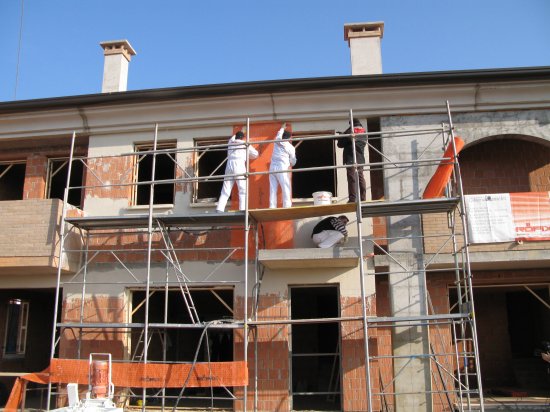Seismic Fabric Could Make Buildings Safer During Earthquakes

The material is branded “Sisma Calce” which Google Translate and a distant cousin tell me means “Earthquake Lime.” It is a “glass fiber plastic fabric material” which could either be similar to fiberglass or a mistranslation thereof. The developers of the material, Lothar Stempniewski and Moritz Urban, have been working for years on a low-cost reinforcement option for buildings in danger from earthquakes, and they are glad to see their product become what they call a “concrete innovation.”
The company that is bringing the material out of the lab and into buildings is Italian building materials manufacturer Röfix. They have included the fabric itself, and the plaster for adhering it to walls in the product line. The stiffness and tensile strength of the material are what gives the walls of buildings added resilience during an earthquake, offering added support that should delay or prevent damage in minor earthquakes. A stiff but flexible fiber that prevents unwanted shaking? Yup — these gentlemen have given us an earthquake-resistant girdle for buildings. Urban says:
Thanks to the reinforcement, collapsing of walls due to earthquakes can be delayed and, in the ideal case, be avoided completely. Particularly in the case of short and moderate earthquakes, mostly not much more additional tensile strength is needed to avoid a collapse of the building.
The goal of the material is to give people more time to get out of a building safely during an earthquake. Right now the material is designed to applied to the exterior brick or stone walls of buildings, but researchers are currently working on versions for concrete and interior walls.
I tried finding an exact price for the material through Röfix, but not knowing Italian has proven too big a hurdle to overcome. Considering the goal is to provide a low-cost option to retrofit buildings, one would hope its not going to break the bank for folks looking to keep their old buildings from toppling over.
(via Karlsruhe Institute of Technology)
- Don’t know about Sisma Calce pricing, but I know the cost to cover a house in bacon
- If you lose power in an earthquake use this candle-powered electric candle
- Italian scientists were sent to jail for not predicting a 2009 earthquake
Have a tip we should know? tips@themarysue.com